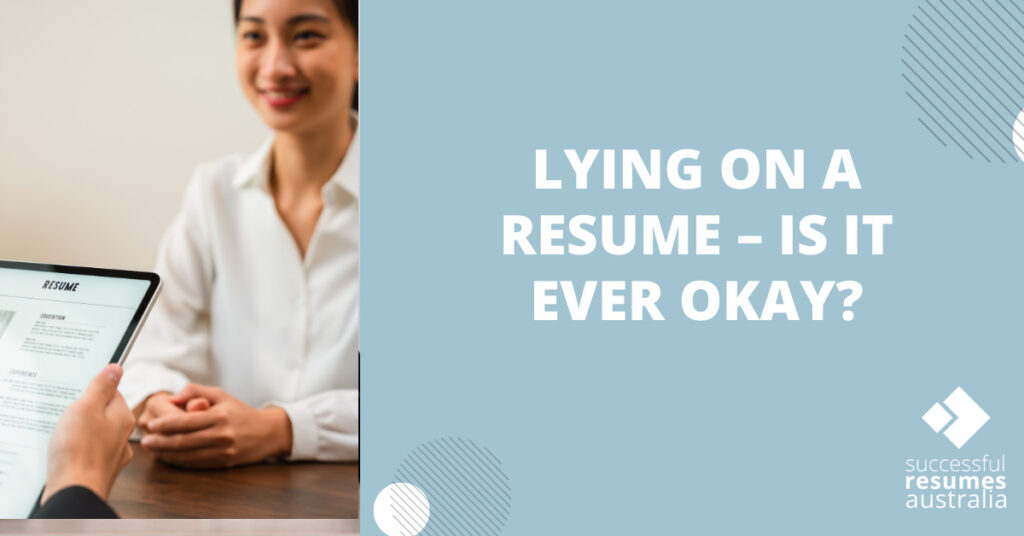Do you need a LinkedIn profile?

A question I get asked often at Successful Resumes Adelaide is whether clients need a LinkedIn profile. My answer is always – yes! No matter what career stage you are at, a LinkedIn profile will complement your job-seeking tools. Job markets are changing and now more than ever, a professional online presence can open doors for you. Possibly doors to opportunities you didn’t even know existed. A well written and optimised LinkedIn profile can be the key to a modern job-seeking toolkit. Despite this, we still find it’s common for clients to only choose to have cover letters and resumes written. In my experience working with Adelaide job seekers, this approach means you could be missing out on great job opportunities! Although both a professional resume and cover letter is required in most job-seeking efforts, they are, for the most part, reactive. You often need to wait for jobs to be advertised and then hope that you are the strongest candidate applying for the role. A professionally written LinkedIn profile can be a highly successful passive job-seeking tool. With recruiters using LinkedIn to source new candidates, you can let opportunities come to you. Do employers in Adelaide use LinkedIn? Yes! Recently a client in her late-50s was completely opposed to having a LinkedIn profile. She said she would email her contacts and send off some applications through Seek, using her new resume and cover letter. She tested her success doing this and, as a result, did get some leads. However, what she found was that employers and recruiters were asking – do you have a LinkedIn profile? Within a few weeks of her creating an online presence with LinkedIn, she started connecting with networks and recruiters in Adelaide and in other states. It opened doors to local recruiters looking for new staff because they found her online. Guess what? Soon after, she emailed to tell me she had been offered a job; an Adelaide recruiter had found her on LinkedIn! she emailed to tell me she had been offered a job; an Adelaide recruiter had found her on LinkedIn! Are jobs in Adelaide advertised on LinkedIn? Yes! In fact, there are 2,484 jobs listed on LinkedIn in Adelaide right now and this is in the midst of one of Australia’s toughest job markets in recent times. If you visit the jobs section of LinkedIn and set the location to Adelaide, you’ll see the incredible range of roles being advertised. It’s a common but outdated myth that these roles are all for senior executives. 50% of the roles listed are classified for entry-level or early-career candidates. With approximately 660 million users in 200 countries and new members joining every second, LinkedIn operates the world’s largest professional online network. Can you afford to miss out on this opportunity? There will always be jobs you have to apply for. Applications for roles in the Australian Public Service, South Australian government or local government still have requirements that must be met. Roles at universities like Adelaide University still require you to address selection criteria. LinkedIn does not replace that. It also doesn’t replace applying for jobs with a cover letter and resume. What a LinkedIn profile does do is gives you professional credibility, demonstrates your network and acts as a tool so that job opportunities can come to you. If you are ready for recruiters and hiring managers to find you, speak to us. We help people across Australia create engaging LinkedIn profiles that attract potential employers and networking opportunities. We take the time to get to know you and where you want your career to go so that you can build a network of people to help you get there. Successful Resumes also offers the full suite of job-seeking tools including Professional Resumes, Cover Letters and Selection Criteria. Find out how we can help you get the job you want by contacting Esther Daniell of Successful Resumes below.
How to Find a Job using Social Media in Australia

Starting your job search can be challenging but knowing the right places to look for opportunities can take the frustration out of the process. According to the Australian Government’s Survey of Employers’ Recruitment Experiences, 2018, although many jobs are advertised on recruitment websites and jobs boards, employers are also using other methods to find the right candidate for their roles. What can you do to increase your chance of finding the right job? Most job seekers are familiar with recruitment websites and using an agency or employment service, but what about social media? We’ve known for a long time that the majority of employers use social media channels to research candidates. In fact, according to Robert Walters, 62% of employers use social media to check on prospective employees. With 8 in 10 Australians using social media, employers are now looking at ways to use social channels to attract and recruit candidates. In 2012, only 1% of available roles were advertised on social media. In 2018/19 it rose to 14%. Where are these roles? According to the Department of Employment, Skills, Small and Family Business, Facebook ‘job groups’, in particular, have grown in popularity. Offering a free online forum, Facebook has become a popular tool for employers to advertise available positions and for job seekers to find employment. Facebook job groups have started popping up in almost every region in Australia. Most relate to geographical areas however some are industry specific. The Transport and Truck Jobs Australia have more than 20 posts per day and 23,000 members. Also with more than 26,000 members, Redlands Jobs Board in QLD offers an online space for local businesses to find local jobseekers. To find the right groups, search for terms like ‘jobs in Perth’ or ‘construction jobs’. Join any that you think look relevant. Not only will you be able to access potential roles, but these groups can also be a great way to build your local or industry network. Once you have joined, you can publish text posts, upload photos and comment on other members posts or announcements. If you are looking for work, you can create a post outlining the type of work you want. Add in details like how much experience you have and your availability. For the most part, though, you will use the group to browse available jobs and comment when you find one that could be a good match for you. For now, it seems that employers in the services sectors are using Facebook the most for recruitment. The rate of technology adoption and engagement continues to grow. We think it’s likely that over time, more employers will use social media to find candidates.
Be A Communications Superstar

Excellent communication skills are essential to building relationships and succeeding in workplaces. They can also make or break your interview success. Here are our top strategies to help you master the art of communicating so that you can connect with people, be understood and build a strong rapport. Learn the basics of nonverbal communication. Albert Mehrabian, one of the first researchers of body language in the 1950’s, discovered that around 7% of the total impact of a message comes from words, 38% from your tone of voice, inflexion, and other sounds and 55% of your impact is nonverbal. That means that most of what you say, or what people take in, isn’t communicated through your words, but through your body language and physical cues. When it comes to job hunting, learning the art of empowered nonverbal communication is critical. Especially at interview time. Even if you are feeling nervous, give yourself a pep talk beforehand to prop up your posture. Stand taller, straighter and prouder. Make sure you maintain appropriate eye contact and be interested. Lean in ever so slightly and remember to smile. Stand and sit tall and avoid slouching or folding your arms. Taking it one level up, calibrating your tone, energy level, language and body language to the interviewer can show that you’re fully engaged in the conversation and will make it easier to build rapport. Although the trick here is to be subtle about it! Prepare notes, then throw them away There is a well know trick to interviews; confidence can get you the job and confidence is built from preparation. When you are ready and armed with examples of your experiences, answering interview questions is easier. We suggest creating a series of career narratives to use across a range of questions or scenarios. We also recommend researching the company and thinking about how your strengths can add value. Once you have done all that, throw it away. When it comes to the actual interview you want your responses to be engaging, agile and responsive. If you over-prepare, you run the risk of sounding rehearsed and scripted. Be a listener To communicate effectively, first listen to what others have to say. Then you can provide a thoughtful answer that shows you understand what they are communicating. Let the speaker finish their question before you start thinking about your response. This is incredibly important during job interviews. Many people are so nervous in job interviews that they hear the beginning of a question and immediately start thinking of their answer before the interviewer has finished the question. When they start to respond, they often lose focus, realising they didn’t get the full question and their not sure what the interviewer was really asking. Bring into play the Power of the Pause Pausing before you speak is one of the most underrated tools that candidate can use in interviews. Great things can happen in pauses. You allow time to think of the most effective response, you carve out the mental space to better articulate your response and importantly you breathe and therefore slow down your speech. Once the interviewer has asked the question, take a few seconds to consider the best way to respond. Really think about the skills they want to you demonstrate and find the best example you have before you launch into your response. Be curious When CareerBuilder surveyed more than 2,500 employers, they found that 32% of hiring managers believed that one of the worst mistakes that candidates make is not asking good questions at the end of the interview. Job interviews are a two-way street. Asking intelligent and meaningful questions, can set you apart from other candidates and demonstrate you’re genuinely interested in the role. More importantly, it’s the perfect way to determine if the job fits your career goals. Old-fashioned manners It’s amazing how far old-fashioned manners will get you. This includes being courteous and polite in the way you speak. Greet the interviewer with a warm smile and use a friendly tone when speaking on the phone. Saying ‘please’ and ‘thank you’ in your spoken communication as well as when you write, will ensure you’re looked on favourably when it comes to manners. And last but not least, it’s good practice to write a small and simple thank-you note or email to your interviewer to thank them for their time and consideration. For some, this has meant the difference between being asked to attend a second interview, or not. If you would like to be invited to more interviews, start with a successful resume. Our team have helped more than 100,000 Australians get the job they want with a professional resume. Complete the form below to find out more.
Improve Your Job Applications with Resume Keywords

If you’re applying for roles and getting the standard ‘unlikely to progress further’ message it might be time to look at how well you are using keywords in your resume. Did you know that when you submit a job application online, your resume gets transferred into recruitment software known as an Applicant Tracking System? This software was created to help companies manage their recruitment electronically. Now a billion-dollar industry, recruitment software is used by recruiters, HR teams and employers to automate and simplify the recruitment process. Along with recording and tracking the progress of every job application they receive; applicant tracking systems are designed to filter and rank the applications based on the best candidates for the job. This is where keywords come into play. If you’re not using the right keywords for the role you are applying for, chances are you won’t rank as a good match for the role. Here are some tips on how you can use keywords to improve your chances of being asked for an interview. Make Your Application Relevant to the Role The most important step to maximise how well your resume performs in the system is to make sure it is designed for the role. Optimising keywords is a lot like SEO. When you enter words and phrases into Google, the search engine finds the websites that it thinks are the best match. Similarly, when an employer is looking to fill a job, they enter the keywords and phrases that best suit the role in their system. The ATS sorts and filters all the applications it has received. It then ranks the candidates that are the best match for the job, based on the employer’s search terms. The resumes that rank the highest, are most likely to be considered for an interview. To make sure your resume has the right keywords, look closely at the job description. What skills and/or experience are they asking for? Have you included these words and phrases in your resume? Word clouds can be a great way to identify keywords. We used MonkeyLearn.com to create a word cloud based on a Sales Manager role in Sydney. By copying and pasting the job description into the generator, you can get great ideas of keywords you can include. Consider Keyword Variations Everyone is different and the language that one person uses is different from another’s. Make sure you optimise your resume by using different names for the same thing. For example, in one bullet point, you might say sales management and in another bullet, you might write account manager. Be aware of other variations people might use. For example, some people refer to Microsoft Office and some call it Microsoft Suite or Microsoft 365. Mirror the Job Titles It helps to look at the language an employer uses to make sure the language in your resume matches. If they are recruiting for a project manager but your current job title is an obscure version of a project manager, like Delivery Specialist, make sure you include the actual title of project manager in your document. It’s ok to change your current title to better reflect the title of the role you are applying for. Just make sure it’s still consistent with the job that you did. Acronyms Systems don’t have the ability to recognise abbreviations like MBA, CPA and PMP if the hiring manager or recruiter is searching for the full name. For example, if they search for Certified Public Accountant but you use CPA in your document, the system won’t make the match. Consider using both in your document. Avoid Keyword Spamming Although tempting, it’s important to not just throw keywords in to try and trick the system. They need to make sense and sit within a context. Eventually, your resume will be read by a human. If it’s not people-friendly, you might make it through the system but fall at the next round in the process. A good resume is successful all the way to an invitation for an interview. Recruitment Software is a growing industry. Although the US is the biggest users at the moment, the Asia Pacific region is expected to have the highest incremental market growth. This, combined with a push to automate recruitment due to COVID, means that applicant tracking systems, like other recruitment tools, including video interview platforms, game-based skills assessments and virtual reality simulations, are all likely to evolve and increase at a much faster rate than in the past. To make sure your resume ranks highly for the roles you are applying for, speak to the team at Successful Resumes.
Getting a Job in Australia during COVID-19

Recruiting experts Hays recently polled job seekers in Australia and New Zealand and found that 39% of people looking for work, didn’t feel confident they knew how to create a job application that would lead to being shortlisted for interview. These findings come at a tough time for Australia. Although the post Coronavirus economic outlook seems better than anticipated, the number of unemployed people in Australia is still expected to peak at 10 per cent, or well over 1.3 million people by the end of 2020. Analysis from the Lowy Institute reasoned it will take the rest of this year and most of next to get Australia’s employment back to where it was in December 2019. To support Australians navigate these challenges, the Government recently announced an extension of the JobKeeper Program for a further six months until 28 March 2021. The impact of COVID-19 hasn’t been equal across all industries in Australia. The accommodation and food industry has been the worst hit with 36% of jobs lost since March 2020. At the other end of the spectrum, the financial services and insurance sector has seen a very slight gain. With fewer roles being advertised and more people looking for work, the competition to secure available jobs is set to increase. We’ve outlined some steps you can take to help your application stand out and be shortlisted for interview. Create a contemporary resume or CV format that will work in electronic systems Many people equate standing out to mean creating alternative resume styles to differentiate themselves from other candidates. Unfortunately, this approach often has the opposite effect. Complicated layouts are still hard for electronic recruitment software to process. Keep it clean and avoid columns to give yourself the best chance. Focus on keywords When you submit a job application online, your resume is transferred into recruitment software also known as an Applicant Tracking System. This software was created to help companies manage their recruitment electronically. Along with recording and tracking the progress of every job application received, the systems are designed to filter and rank the applications based on the best candidates for the job. This is where keywords come into play. If you’re not using the right keywords for the role you are applying for, chances are you won’t rank as a good match for the role. Demonstrate why you are the best match for the job Your future employers are looking to understand how you will bring value to their business. The best way to do this is by demonstrating how you brought value and impact to previous employers. Transform your previous job responsibilities into examples of how you contributed to the success of the business by using the 5 W’s and a H – what, where, why, when, who and how much. Use the summary section to tie your experience to their role A resume that is relevant to the reader will always perform better. Use the summary section of your resume to showcase the technical capability, experience, qualifications, and soft skills that will help you bring value to their business. Focus on the skills they are looking for and dive into your career to find the best example of how you have those skills. If you would like more specific advice based on your career, contact one of our resume writers. We craft resumes and CV’s that help our clients stand out – in a good way. Successful Resumes is a leader is professionally written resumes, CV’s and application documents. With more than 30 offices around Australia, and international offices in New Zealand, Singapore, Hong Kong and India reach out to us to how we can help elevate your career.
Mastering the Pitch – Writing Australian Government Job Applications

To be competitive at any career level, you must be able to articulate your achievements and the impact of your work. When applying for roles with the Australian Government, you do this in a pitch. Over the last five years, government agencies have evolved their application process. In an effort to streamline recruitment procedures and reduce the time it takes to recruit, the public service farewelled individual selection criteria in favour of a ‘submission’ and resume. While the submission element can take many forms, the most common request is a 1 or 2-page pitch. Sometimes it can also be a limited word pitch of 500, 750 or 1000 words. What is a Government Job Application Pitch Considered a ‘brief of evidence’, a pitch is your opportunity to tell the hirer why you are the right person for the job with the evidence to back up your claim. It is not enough to say you’ll be great at the job, you need to prove it with demonstrated evidence. The pitch also provides an opportunity to tell the hirer why you want to work at the organisation. It’s your chance to explain why you are interested in the role, what you can offer, and how your skills, knowledge, experience and qualifications are applicable to the role. To write a successful pitch, we spoke with Jenny Carlin, owner of Successful Resumes Canberra. Here’s what Jenny had to say, “To write a successful pitch, I suggest using a 3 part structure. The structure helps keep you on succinct while presenting all the information they need to make a favourable decision”. Part 1 – The opener Introduce your interest in the role and present your case as a strong candidate with a tailored and highly relevant opening paragraph. The opening paragraph should make the case for why you should be considered for the vacancy. The Department of Jobs and Small Business suggests it should include things like, why you are interested in the role, what you can contribute, and how your attributes, skills, knowledge, experience and qualifications will ensure your success in the role. To be effective, it must demonstrate relevance to the reader. Focus on highlighting the specific skills, experience and qualifications they are looking for. Part 2 – The proof The next part of your document is providing proof. In this section, you should include several example-based paragraphs to demonstrate and quantify your capability. For a 1-page pitch that means 2-3 examples and a 2-page pitch might be more like 5-7. Using a formula for these proof points is critical. Jenny suggests using CAR stories. C : Circumstances Add value here by outlining the strategic context or complexity of the situation, other players, and any risks, difficulties, challenges A : Action Ensure you include an appropriate amount of detail and keep the focus on you! Jenny suggests also including the most critical and relevant reasoning or decisions behind the actions R : Results This is where you describe how the end result impacted on the objective of the organisation or team. Jenny suggests mentioning both the intended and unintended outcomes of your actions. Along with including feedback, lessons learnt and impact on the work area / agency) You do not need to use different examples to demonstrate the individual skills required in the position overview. Likewise, if the agency mentions selection criteria that reflect the federal government ‘Integrated Leadership Framework’ that describes the required competencies for each level. For example, if the position overview states “we are looking for a confident communicator with the ability to problem solve and work effectively as part of a team”, you can use one example that demonstrates all of these skills. In choosing your career stories, focus on examples that are relevant to the job and the level you are targeting. Once you understand the role requirements, create a list of examples from your previous experience that will show the panel why you have the right experience to be successful in the role. Include the best examples in your pitch. The remaining ones can be used to both tailor your resume for the role and at the interview. It’s good to show the panel that you have plenty of examples to draw on. Part 3 – The closing The final part of your document is a short closing paragraph. Jenny suggests using this paragraph to wrap up by outlining the contribution you could make in the role. It’s also a great opportunity to express your enthusiasm for the opportunity. [icon name=”key” prefix=”fas”] Dont risk your next job application. Successful Resumes can work with you to create the perfect pitch that helps Government recruitment teams put your application on the top of the list. For more information on how a small investment in yourself can pay big rewards, please get in touch below.
Why you’re not getting the job after interviews.

If your resume is landing you interviews but you’re struggling to convert them to job offers, it’s time to look at what is preventing you from securing your next opportunity. Here are 5 reasons you might not be getting hired and how you can fix them. You’ve underestimated the phone screen For a number of roles, recruiters will reach out to you for what sounds like an informal and friendly call. Don’t be fooled by the idea of a quick chat. While not as formal as the core interview process, this a still an interview of sorts. The recruiter is using this opportunity to determine your fit for the role so it’s important to be prepared with both your pitch and possibly salary expectations. If you are applying for multiple roles concurrently, have the job advertainments or position descriptions printed out and on hand so you can quickly reference the role they are talking about. It’s a good idea to have made notes on the printout that connect their requirements to your skills. This will help you craft a relevant pitch that establishes what you will bring to the role. It’s also important to have considered how much you want to be paid. Do your research on similar roles and have a figure in mind, so you are not fumbling if and when the question comes up. You haven’t demonstrated your interest When I was recruiting for roles, it was frustrating when you got the impression that the candidate had no idea about the role they were applying for. They obviously hadn’t done any desktop research on the company or its products and services which showed a lack of authentic interest. If you want an employer to care about you and your application, show them how you care about their company and the role. Make it clear that you have done your research and that you are enthusiastic and excited about the opportunity. Your body language is giving off the wrong message It is widely recognised that more than half of what you are saying doesn’t come from the words you are speaking. Communication is both verbal and nonverbal, and tone and body language often play the biggest part. If you’re trying to make an impression, it’s critical to consider what your body is saying. Forgetting to smile, slouching in your chair, or failing to make eye contact during an interview, could cost you a job offer. Read more on body language for successful interviews here. You haven’t built a bank of career narratives The trick to a good behavioural interview is to respond to questions with examples that clearly demonstrate how you have the skills, capabilities and experience to be successful in the role. One of the best ways to do this is by creating a bank of narratives that show how you have been successful in previous roles. There are lots of formulas and the STAR approach is probably the most popular. We think you can simplify it even more with SAO : Situation, Action, Outcome. With practice, you should be able to get these down to three simple but strong sentences. Being prepared with a series of examples also prevents the common issue of getting lost in the response and rambling. You haven’t practised. Interview practice is so important for both building your confidence and delivering clear concise messaging. Once you have found a list of common interview questions, work your way through a dozen or so to test how comfortable you feel answering them out loud. You can also ask a friend or family member to help you with a mock interview. They simply chose questions from the list for you to answer and provide you with some feedback. The team at Successful Resumes also offer interview coaching and can create mock interview to help you prepare. Please reach out to us for more information. It’s important to remember that sometimes you can be doing everything right in your job search but things outside your control prevent you from landing your next opportunity. You might be coming up against internal applicants, or the hiring manager is looking for a specific micro skill to add value to the team. Keep your confidence strong, focus on the aspects of job search that you can control and know that the right role for you is on its way.
How to Get A Job in Australia’s Mining Sector

Australia is one of the world’s leading mineral resources nations. From the gold rush of the 1850’s to today, the minerals industry is one of the biggest contributors to Australia’s export trade and a significant contributor to the Australian economy. Continuing a trajectory of growth, employment in the industry has increased by 21.4 per cent over the last five years and is expected to create an additional 15,000 new jobs over the next four years. Mining is a very competitive industry. With tales of entry-level jobs paying incredibly well, many people have been lured to the industry in the hope of working hard for a few years to set themselves up for life. While it’s not always easy work, if it suits you, the money can make it worth the effort. In fact, the industry boasts an average weekly wage of $2,697, well above Australia’s average weekly wage of $1,713. Drillers, Miners and Shot Firers are the leading occupations in the industry with Metal Fitters and Machinists following. Truck drivers are also in demand with more than 14,000 employed within the industry, but it’s certainly not all dirty, dusty, and backbreaking work. The Australian mining sector is emerging as a global technology leader with a growing number of cutting-edge roles in innovative tech-driven fields. In pursuit of improved safety, sustainability and competitiveness, the mining industry is adopting new technologies such as robotics, drones, data science as well as virtual and augmented reality to streamline and optimise performance. This change heralds a shift in the type of roles available and requires a different skill mix for the future mining workforce. In fact, research conducted by EY for the Mining Council of Australia found that 77% of jobs in Australian mining will be enhanced or redesigned due to technology within the next five years. So how do you pursue a mining career?Successful Resumes writes resumes for people at all levels of their career in the mining and METS industries. We reached out to some clients who have climbed the mining ladder to ask their advice on how to get a foot in the door or leg up in the industry. Here are their tips and tricks. Knowing someone still works really well but is not the only way in.Building your networks and reaching out to people you know in the industry is a great way to discover upcoming vacancies or be recommended for a role. If you don’t know anyone in the industry, a specialised recruitment company that focuses on mining roles is your next step. Research jobs in the Australian mining sector to discover how you might fit in.If you want to pursue a career in mining, start by getting to know the industry. The Minerals Council of Australia have created a great guide, More to Mining Careers, that takes you beyond stereotypes and helps you choose potential careers and pathways into the mining industry. Get some qualifications.Once you have identified the types of roles you are interested in, investigate the core job requirements. These could include a vehicle license, a Heavy Rigid (HR) license, or a Certificate for the Mining Drilling & Civil Infrastructure role you are looking for. The mining industry takes health and safety seriously so completing basic mining training or Standard 11 Induction is a prerequisite for most roles. Focus on relevant skills.When we spoke to hiring managers in the industry, we asked them what they look for in a resume for an operator/maintainer. Along with the trade qualifications and experience some key skills came up. “Exposure, experience and commitment to the use of safety systems.”You can’t overstate how important the right attitude towards safety is in the mining industry. It is widely recognised that mines are hazardous workplaces which can present very significant risks to workers and others. Mining companies take these risks seriously and are looking for people who will not only adhere to the safety processes but promote them to build a safety led cultures on the sites. “Flexibility and adaptability. We’re trying to get quicker at change. We dont want to do things the same way we always have. This means we’re looking for people who can cope with and even create change.”Like many industries, to stay competitive in the mining industry requires change. The industry evolving through technology, data analytics and automation. This has created a drive for more collaboration, creativity, and social skills to successfully manage changing community expectations. “Technology. Our tradespeople and operators more and more need to be comfortable and able to use technology. Even if they don’t have experience, they should demonstrate a willingness and ability to learn.”Rapid advances in technological innovation are reshaping the Australian mining industry. While autonomous vehicles, automated drilling and drones are replacing some functions, traditional jobs are also increasingly being augmented with new technology. For example, mining mechanics and electricians are needing to cross over into control systems more and more. This makes experience or a willingness to learn is highly valued. “People leadership skills.”Once you get to the interview stage, it becomes a lot less about technical skills and more about people leadership skills. In fact, some hiring managers said people skills were the MOST important thing they look for. Mines are collaborative working environments. Making sure everybody is working towards the same goals is both more efficient and safer. Demonstrating how you have good people skills is both important on your resume and when answering behavioural interview questions at the interview stage. “Diversity is important for us”.Most mining companies recognise the value of diversity. Many are actively trying to increase the proportion of females and indigenous employees, but they are also looking for diversity of experience and culture. This can be an advantage if you are trying to use your existing skills to break into a new industry. Like all resumes for career changes, focus on your transferable skills to show how you could be an asset to the company. If you would like specific feedback on how to write
What is your Expected Salary?

It’s probably the most awkward phase of the recruitment process but setting your salary expectations is an essential step for many roles. Unless the recruiter or hiring manager has been upfront with the salary range, the first hurdle can be knowing the right time to bring it up. According to this PayScale post, a Robert Half survey found that 38 per cent of managers felt discussion about salary should at least wait until the second interview. This is consistent with conventional thinking that says talking about money in the first meeting is a faux pas. The reasoning behind this comes mainly from managing perceptions. You don’t want the employer to think you are more interested in the money than the job. Jobseekers the world over have experienced the ramifications of bringing up money too early. In 2017, a Canadian food delivery service SkipTheDishes landed in a social media storm when a job applicant tweeted their response after the applicant, Taylor Byrnes emailed the company to ask, “If I do end up filling this position, how much do you think I’ll be getting paid an hour?” Byrnes asked. “Benefits will also be included, right? Sorry, I just thought I should ask now. Thanks for your time and have a lovely day.” The talent acquisition manager Karras then followed up with another message clarifying the company’s position. “As a start-up company, we seek out those who go out of their way to seek out challenges and new opportunities. We believe in hard work and perseverance in pursuit of company goals as opposed to focusing on compensation,” she wrote. “Our corporate culture may be unique in this way, but it is paramount that staff display intrinsic motivation and are proven, self-starters. For these reasons, questions about compensation and benefits at such an early stage is a concern related to organizational fit.” After public support and a #boycott hashtag that gained popularity, the company rescinded its stance and invited the applicant for a second interview. None of the media reports mentioned whether she got the job though. How do you successfully navigate salary discussions?For most candidates, the biggest challenge is knowing where to pitch yourself. If you go too low, you could be underselling yourself but if you go too high, you could take yourself out of the race. The key to win/win negotiations is to be diplomatic and prepared. We’ve suggested some steps you can take below: Don’t rush to the discussion of money.Taking your time will give you an opportunity to get a better idea of the role and the challenges the company might be facing. Linking these to your skills might give you a chance to build your potential as a solution and increase your value. For many companies, a candidate who might cost $10,000 more but can hit the ground running and is the right fit for their future business goals may be an investment that pays off. Do your research.Research is important throughout the entire job search process. When it comes to salary negotiations, it’s good to build your understanding of what’s a fair starting salary for the job and the company you’re considering. There are salary benchmarking tools on the market to help this process. Glassdoor, PayScale and Seek all offer in-depth salary data for specific jobs and employers. Likewise, recruitment firms including Hays and Robert Half also offer salary guides for Australia and New Zealand. These tools will help you identify industry standards and provide some parameters around your own expectations. Set a range.Setting a salary range provides greater scope for negotiating. If you start negotiations at the upper end of the range, there is room for movement. It’s important to set a realistic range that considers how long you’ve worked in the industry, your qualifications, your achievements, location, the demand for your skills, the company and industry hiring trends. Each of these will help inform where you should pitch your expectations. Know your range but don’t volunteer it first. It’s generally best to get the employer to give a number first. Think beyond the salary.When it comes to accepting a role, it’s not just about the salary. There is value in the whole picture. This can include, responsibilities, job titles, location, and flexibility, along with the potential for career advancement, professional development, and further education. When it comes to thinking about where you want to go in the future, looking at the opportunity with a holistic lens that considers salary and non-cash benefits could be important. Not all roles are up for negotiation.If the role is in the public sector including local, state, and federal government, it’s likely there will be a fixed salary range with no room for negotiation. Don’t assume you have to accept the first offer.Even in competitive job markets, negotiating diplomatically and in good faith is always acceptable. It’s important for all employees to feel valued and compensated fairly for their skills and experience. In fact, research shows it has a direct impact on job satisfaction. The Australia Pay Experience Report, released in 2019 by Ceridian, revealed that more than half of Australian workers (54%) are unsatisfied with their level of pay. To ensure lasting success in any role, mastering salary negotiations to ensure you feel valued is a perfect place to start. For more information on how we support job seekers navigate their next career move, please contact us below.
Lying on a resume – is it ever okay?

Everyone does it, right? But is lying on your resume ever okay? Checkster, a reference checking company based in the US, recently surveyed more than 400 job applicants as well as 400 hiring managers, recruiters and other human resources professionals about lying on resumes and the results were pretty astounding. The survey found that 78% of job seekers admitted they did or would consider misrepresenting themselves on their job application. This backs up a study done be CareerBuilder that also suggested 75% of employers have caught a lie on a resume. In Australia, the figures are estimated to be a different but no less alarming. The Independent Commission Against Corruption (ICAC) has conservatively estimated that 25 per cent of job seekers have inaccuracies on their curriculum vitae. There’s a variety of things people lie about on their resume, but education and qualifications are the most common. Next on the list were dates of employment, position titles and overstating experience or skill levels. So, is it acceptable to lie about any of these elements, and what are the associated risks? QualificationsThe qualifications you’ve earned are often a key element of being hired for a particular job and this is especially the case if the qualification is a formal one such as a trade, TAFE or University. All qualifications issue a certificate of completion, and for the most part these include dates of attendance and a copy of your results. Some employers will ask for evidence that you’ve completed a qualification and if you’ve lied, you’ll certainly have some serious explaining to do if not worse. In the UK, an employee claiming to have two PhDs and a master’s degree, but only really had a higher education diploma in social work and a teaching qualification, was jailed for two years when his deception was discovered. Governments are now beginning to crack down on resume fraud. In Western Australia, state governments can now fine CEO applicants up to $5000. If these applicants provide false or misleading information during their application process, they will be charged. Veronica Theriault, who was appointed as the head of IT in South Australia’s Department of Premier and Cabinet, was arrested in 2017 after lies were discovered in her CV. She was fired from her $270,000 p.a. gig for writing a fictitious 20-year work history as a tech executive and claiming fake university degrees. Daringly, she has also used a headshot of actress Kate Upton as her LinkedIn photo instead of her own. ExperienceThe survey of jobseekers found it was common for people to adjust the length of time they’ve worked for a company so they can fill gaps in their resume or remove entire jobs. This is particularly common for people who have jumped around often. Removing one or two roles give the appearance of more stability than they have actually had. Oddly, anecdotal evidence found people have also changed the name of a company and even invented companies! Department store Myer sacked its General Manager, Strategic and Business Development, when they found out he lied on his resume. The employee Andrew Flanagan, claimed he had worked in jobs with salaries between $140,000 and $350,000 before landing the $400,000 role with Myer. He had convinced acquaintances to be fake referees who lied to confirm his fake job history. Flanagan’s weave of deception was discovered on his first day when Myer publicly announced his appointment and an old “employer” contacted the retailer to deny he had worked for them. With information so readily available online these days, lies of this sort will soon unravel. A quick search online will show the name of companies, the dates of their existence and other associated information. If an employer is curious, or suspicious about any experiences listed on your resume, they can ask for a reference. If you can’t provide one, you’ll need a very good reason why. LinkedIn also improves the transparency of candidate’s careers. If you have listed a role, it is even easier for a recruiter or hiring manager to reach out and confirm your employment with the company. The only acceptable lie as far as most employers are concerned, is perhaps a slight blur of working dates. Perhaps you can’t quite remember whether you started a job in January or February back in 2010, or if you resigned at Christmas or in the New Year for example. So long as you’re not covering up any misdemeanor, you’ll probably get away with slight blurring of dates, although we don’t recommend it. SkillsWhen CareerBuilder did their study of more than 1,100 hiring managers and human resource professionals, The HR managers shared their most memorable and cringe-worthy examples of real-life gaffes found on actual resumes. One of them was an applicant who applied for a job that they were vastly unqualified for. Only in this instance, the candidate didn’t pretend to have the skills for the job. But as it turns out many do. According to Monster’s 2019 State of the Recruiter survey, 85% of recruiters said that candidates exaggerate skills and competencies on their resumes. It’s important to know that if you lie on a resume about having skills that are integral for the job, your employer can terminate you. If you are hired for a data entry role, but when you start they realise you dont know how to use Microsoft Excel, you can and likely will be, fired. SalaryYou won’t need to print the amount of money that you’ve earned on your resume, but it may come up in conversation during the interview process. You might be tempted to add a few thousand dollars here or there, but employers are savvy, and companies are usually aware of industry averages for particular jobs. If you over-state your previous salary it may ring alarm bells, and this type of information can be validated during the reference checking process anyway. If you’re in need of a new resume, or would like assistance with reworking an existing resume, we’d love to
